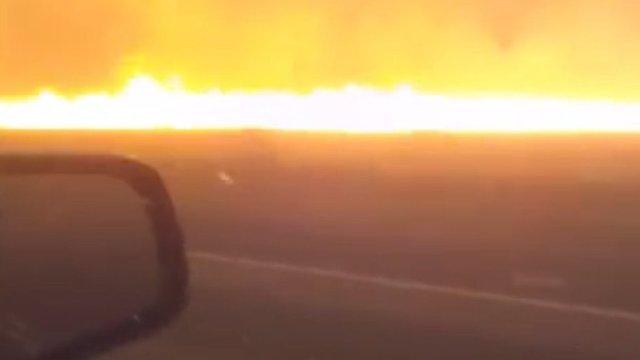Australia bushfires: 'Most buildings' in tiny town damaged
- Published
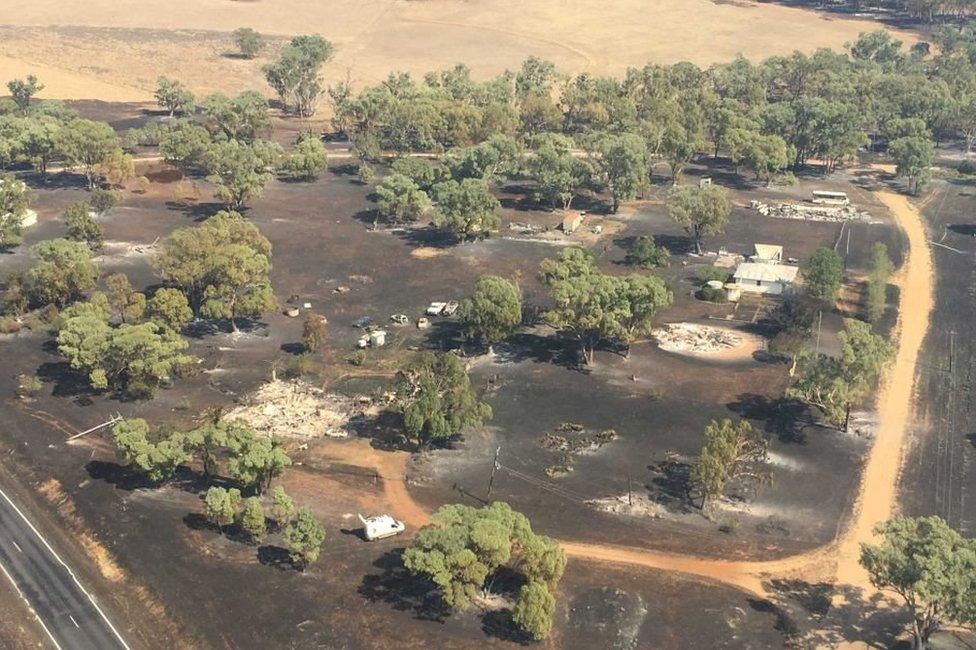
The fire has destroyed buildings in Uarbry in New South Wales
Bushfires ravaging the Australian state of New South Wales (NSW) have largely destroyed a very small town, residents have said.
More than 80 fires - including 20 uncontained - were still burning on Monday following record temperatures.
The Rural Fire Service (RFS) said it was remarkable no lives were lost amid "catastrophic" weekend conditions.
But about nine of 12 buildings in the tiny community of Uarbry had been destroyed, according to locals.
RFS Commissioner Shane Fitzsimmons could not confirm that number but said "most buildings" in Uarbry had been razed or damaged.
The blaze, dubbed Sir Ivan, had an active fire edge of about 200km (124 miles) and had burned through 50,000 hectares near Dunedoo, Mr Fitzsimmons said.
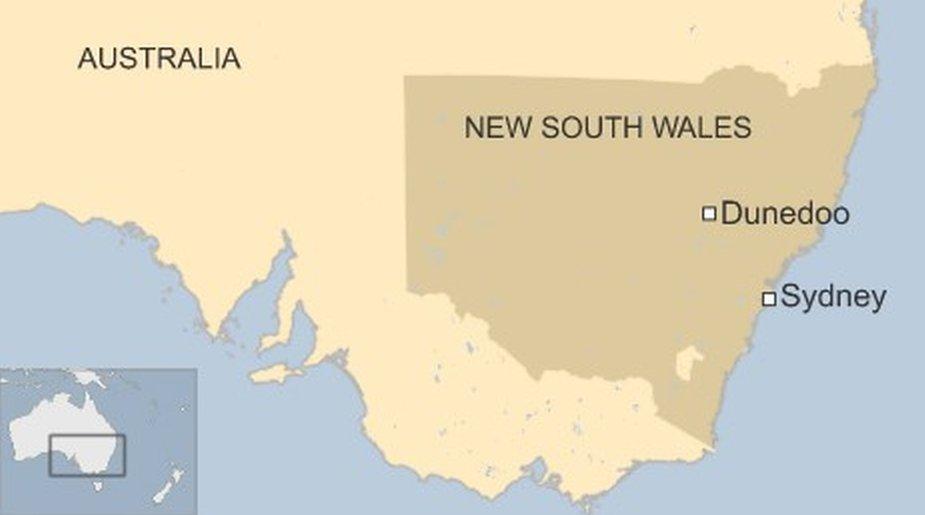
"One of our captains in that local area was a resident of Uarbry," he said.
"He was out fighting the fires and he has come back to find that his home is destroyed."
Local resident Peter Gilmour told Sydney's Daily Telegraph that only three houses in the town were unaffected.
"Most neighbours have lost everything," he said.
Conditions to ease
More than 2,500 firefighters, many of them volunteers, were battling the fires. One firefighter had suffered a severe hand laceration, while another suffered serious burns to the hands, arms and face, Mr Fitzsimmons said.
Officials said the weekend conditions were worse than during the 2009 "Black Saturday" fires in the state of Victoria, which killed 173 people.
NSW broke its record for the hottest average statewide temperature on Saturday, with 44C. The towns of Forbes (46.C) and Richmond (47C) had their hottest days on record. Interstate, records were also broken in the Queensland towns of Gatton (45.6C), Oakley (42.6C), Toowoomba (40.8C) and Kingaroy (41.6C).
Australia's weather bureau forecast a cool change to arrive on Monday.
Footage showed thick smoke blocking out the sun
Emergency Services Minister Troy Grant said the conditions were unprecedented.
"Those in our community who are feeling relieved that we may have dodged a bullet, we must remember that there are many who have been devastated by fires in their regions," he said.
NSW Premier Gladys Berejiklian thanked firefighters for their efforts.
"We are not out of the woods, however, we are beyond the worst part of those catastrophic conditions that existed over the weekend," she said.

Australia's severe bushfires
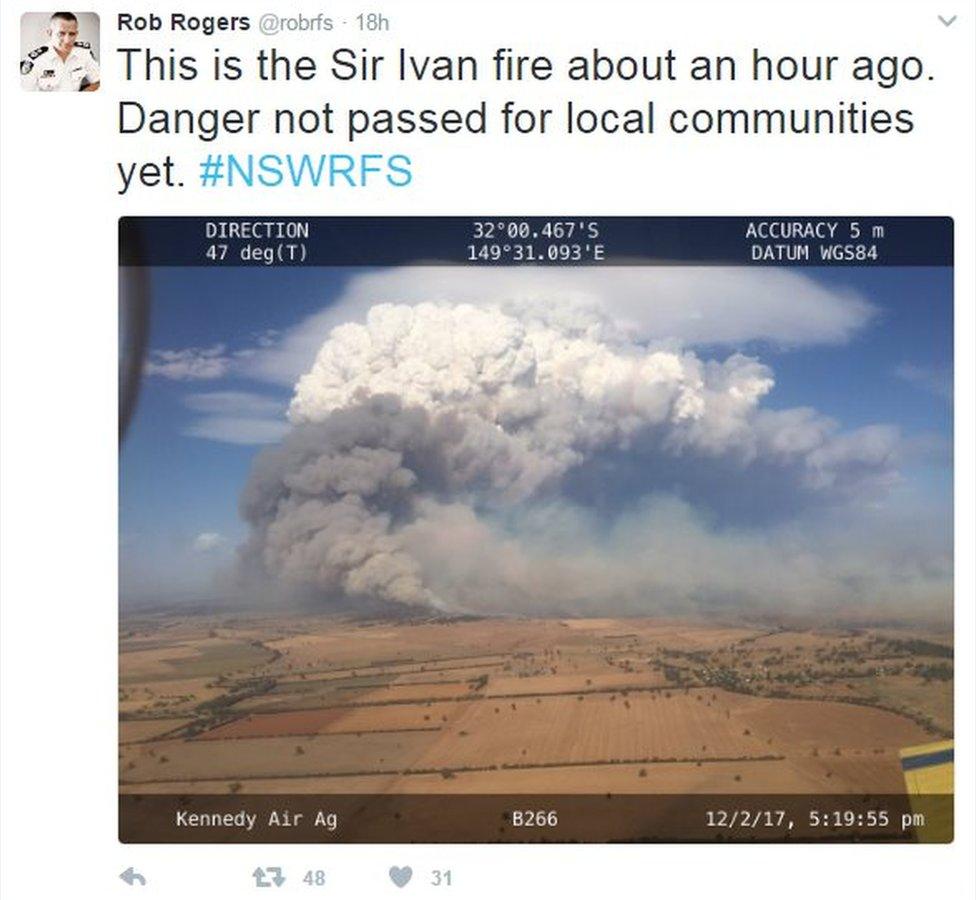
What causes the fires?
Australia is particularly prone to bushfires as much of the country has both a hot, dry climate, and plenty of vegetation to burn. All it then takes to start a fire is ignition, and there can be as many as a thousand lightning strikes in a storm.
Is there any way to stop them happening?
Their impact can be reduced by preparation: authorities can clear vulnerable land in advance and build more fire-resistant settlements; individuals can prepare their own defences and escape plans.
Once they start, can they be put out?
Less fast-moving fires can be fought by "direct attack" - ground troops with hoses - but more dangerous situations have to be fought with strategic techniques like "back-burning" land ahead of an advancing fire, to starve it of fuel when it arrives.
Read more: Fighting Australia's bushfire threat

- Published8 January 2016
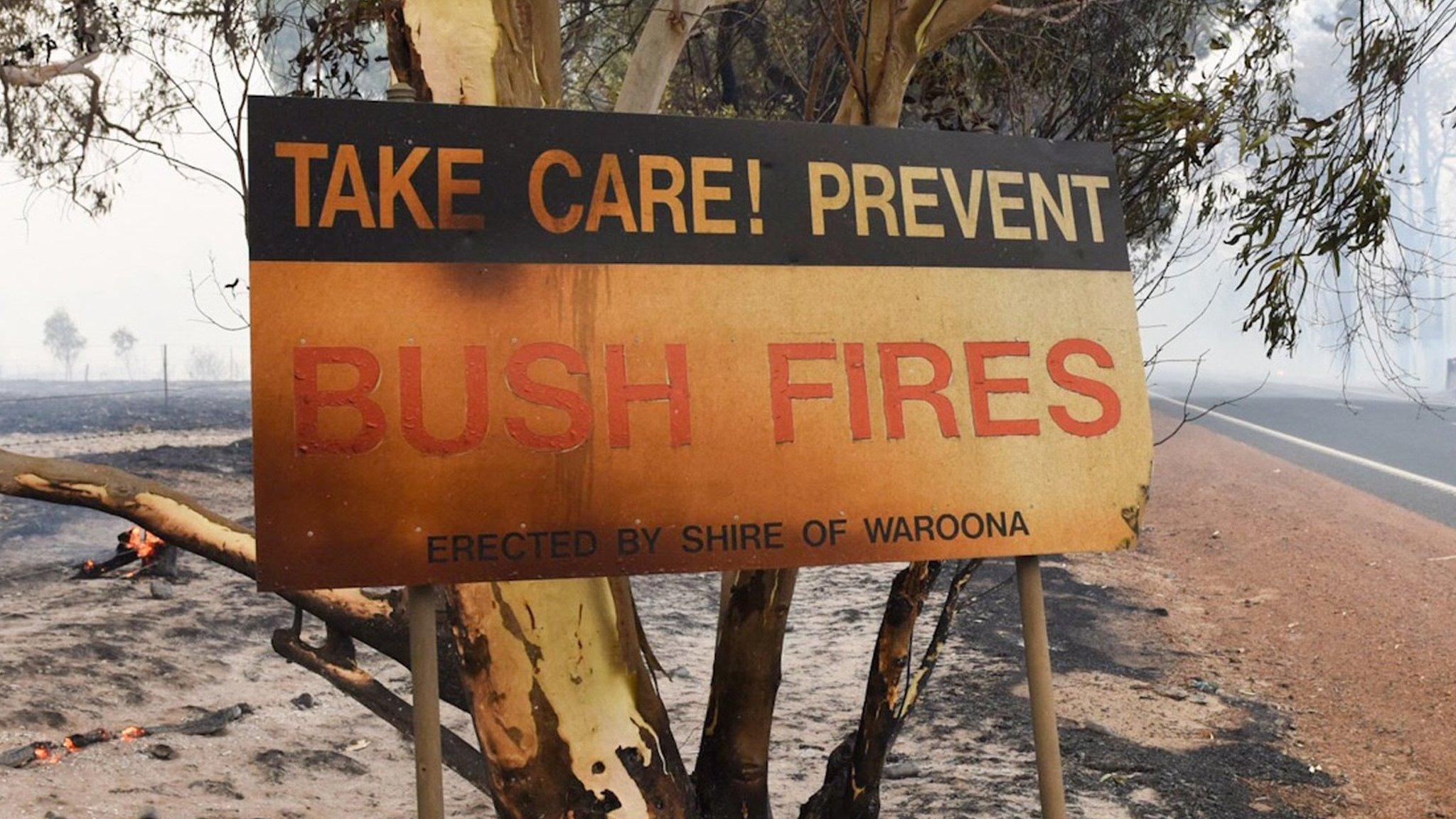
- Published8 January 2016
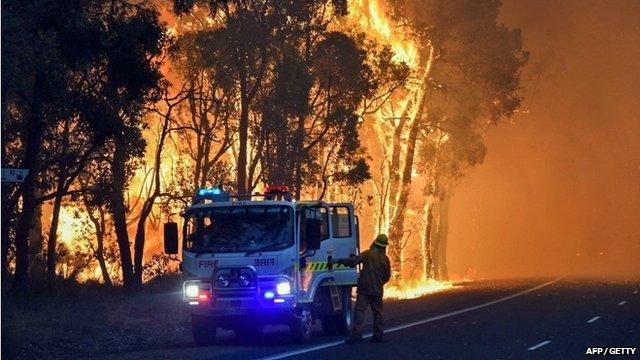
- Published26 November 2015
